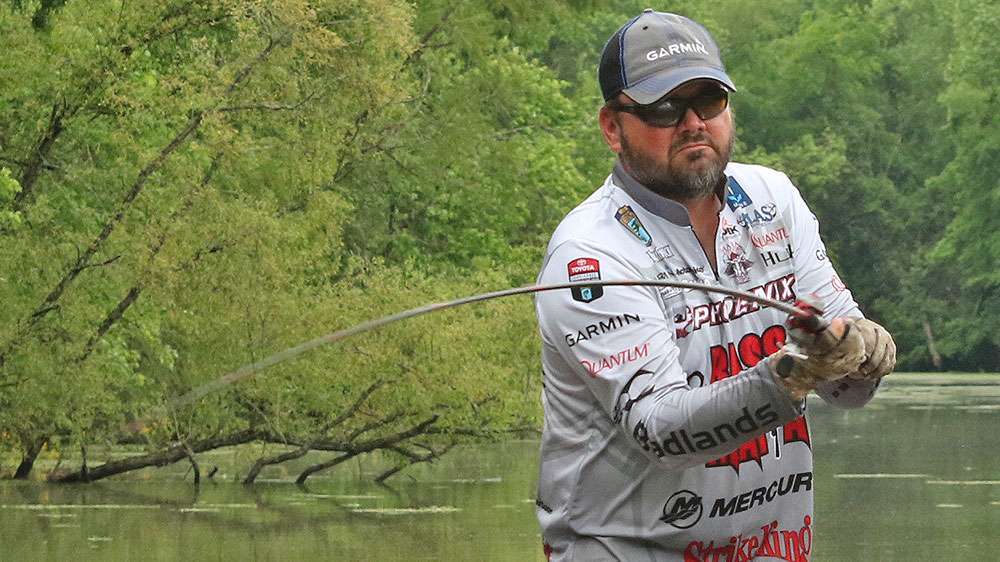
Why bass move really deep at the first sign of winter and then back up shallower when it gets really cold is something we don’t completely understand. The most likely explanation seems to be that the water is warmer near the surface than it is near the bottom.
At first glance that doesn’t seem to make sense. But if you stop to think about it for a minute you’ll realize it makes perfect sense.
Surface water gets cold because of the air and the wind. The water underneath not so much. Cold water is heavier than warm water. It sinks. Over time the water underneath becomes colder than the surface water. The sun and warm days have no effect on it. They warm the surface but that water doesn’t sink because it’s lighter than the water underneath it.
Baitfish feel this difference and so do the bass. Everything moves up.
Typically you’ll see the fish movement near sharp drops. The bass move away from the flat areas and gravitate towards places where they can go up and down with a minimum of effort. That’s why you catch bass with lures like jerkbaits over channels late in the winter, but earlier in the winter you can’t.
It’s also why you can sometimes catch them in the backs of creeks and other really shallow places, especially if there’s some water flowing in from a creek or a drainage pipe. That water is warmer despite the miserable winter conditions you’re enduring.
And don’t forget about the points. The early winter bass might be way out on them but as the winter wears on a crankbait up shallower might be the ticket.
As a side note you see this phenomenon in reverse during the summer. It might be terrible hot out on the main lake and the water might feel like bathwater but at times you can run way back in a flowing creek and catch them shallow. In that case the water is cooler. It attracts the bass.
Now, we need to spend some time on the concept of warmer and colder. In some lakes and reservoirs the difference in temperature between shallow and deep might be pronounced, maybe as much as 5 or 6 degrees. In other places, however, it might not be more than 1 or 2 degrees. Still, that’s enough if it’s all the bass have to work with in their world.
I know it might seem like we’ve wandered around talking about where they might be or should be located. Unfortunately, that’s about all I can say at this point. Winter bass locations are very site specific. You have to know your lake and spend time with your electronics if you’re going to be successful.
Learn how to spot shad on your SONAR unit and how to tell the difference between a dark spot and a fish in the water column. And learn how to mark waypoints and how to return to them another day. True winter and late winter bass don’t move all that far. Once you find them they’re likely to stay put for a while.
In our final segment we’ll talk about how to find those hidden shad bungalows that are full of bass so many guys talk about. Yes, they really do exist.
Editor’s Note: Read Part 3

